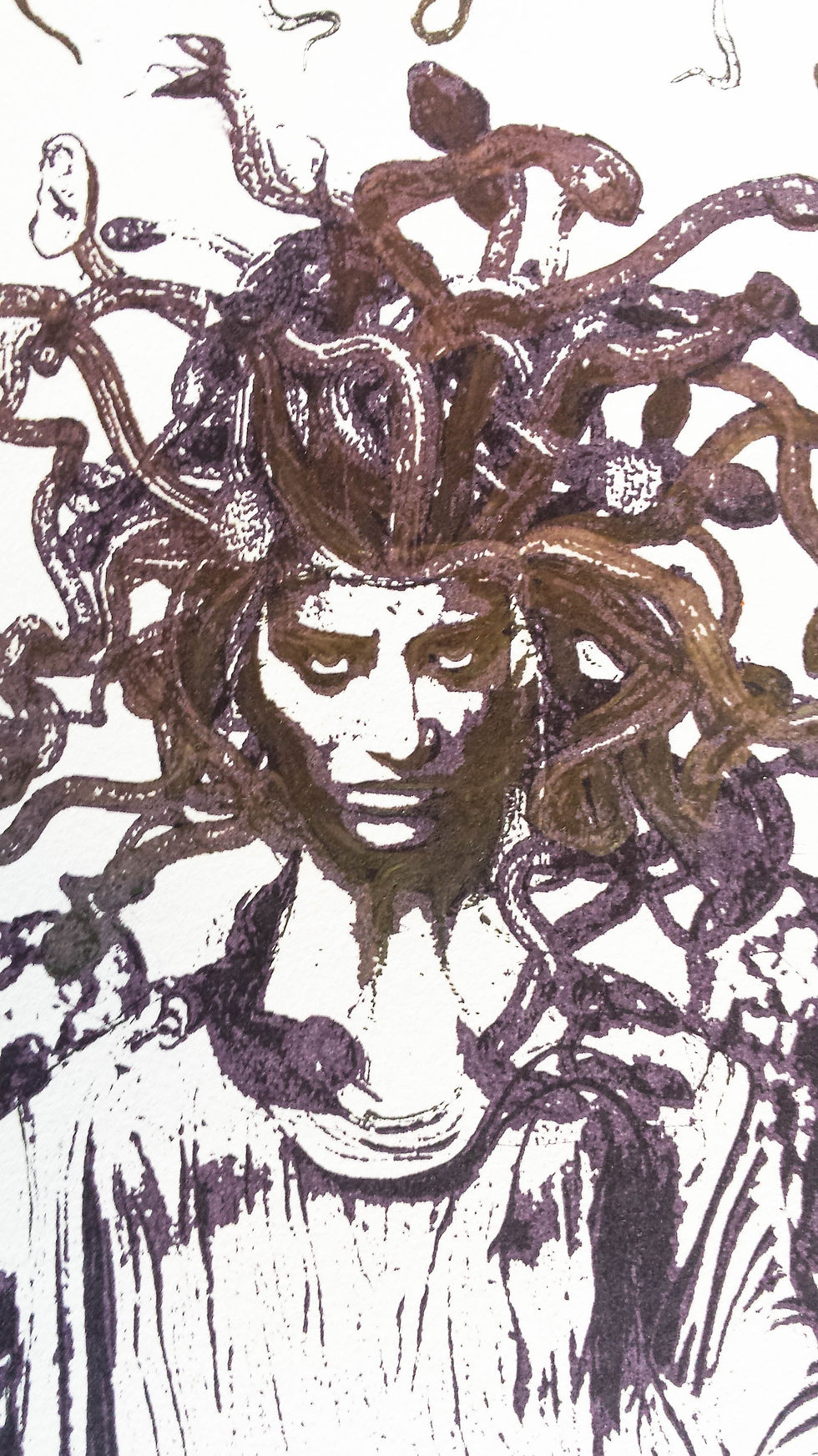Curiously Compelling: the construction of collage
- hannahcaprice
- Aug 11, 2018
- 3 min read
Three weeks into the second semester and I'm already neck deep in paper cut-outs and ink. This semester has been all about playing with Photoshop, which has been handy as I’m required to create three resolved collages for one course, and a couple of zines for another. Since I've been putting off learning Photoshop for long enough now, I decided that this is the perfect time to learn the ropes.
We are expected to construct analogue collages using the Chine-collé process, too, incorporating a range of traditional and contemporary print media. I’ve decided to document a few process photos in this post, just to present the experimental methods that lead to the resolved, final pieces.

In the analogue process, I collected a range of physically printed material (such as magazines, postcards and old books) and a few images printed from the internet - still physical! After flipping through a few, I began cutting and making playful compositions. At this stage, it was simply about having fun and discovering what images work well together.



The next stage involved making a mirrored image of my decided composition. Cut-out pieces are blue-tacked to paper, scanned and then flipped horizontally in Photoshop to create a mirror image. This is then used as a registration tool when placing images down on the etching press. The Chine-collé process involves gluing the cut-outs with rice paste onto damp rag paper. In order for the pieces to adhere properly, extra pressure from an etching press allows the cut-outs to become embedded into the paper, and sufficiently glued onto - and, to a degree, into - the paper.



As for the digital process, I spent hours collecting images from the internet. In the beginning, I just wanted to learn how to use Photoshop, which I've had on my desktop for a while and hardly touched. After doing a lot of Google searching on 'how to *xyz* in Photoshop', I learned enough to layer, cut out, crop, blend, erase, resize and arrange images. I'm happy to say that I've reached the point of no return and am completely captivated by it! Here are a few experiments I played around with in the beginning.





I decided that I want to go for a 'Deadly/Beautiful' theme in my final collages - 'beauty' that can potentially result in unwanted attention or a threat to one's life, and the 'deadly' that tells onlookers 'you can look, but you'd risk your life to touch me'. Here is one collage I think I've decided upon for one of my resolved works. It consists of deadly, but beautiful, sea life such as the blue-ringed octopus, giant red sea urchin, the flower urchin, the lion fish and the blue dragon.

The other two (which I finished these last couple of days) are based on toxic plant life and a family of moths - called the Zygaenidae. These little winged beauties contain hydrogen cyanide which they use for self defence.


Just for good measure, I though it would be fun to include a few images I've been working on for a zine. For this project, I've decided to create a 'mix-and-match' book, inspired by Graeme Oakley's vintage picture book 'Magical Changes' and 'The Exquisite Corpse' invented by the Surrealists. When the images are cut in half horizontally, they should match up to create new and even stranger compositions, such as a winged-cheetah with a fish tail or a mushroom-headed brachiosaurus







Comments